Pilates is a form of exercise that was devised in the early 1920s by Joseph Pilates.
Pilates is an excellent tool for rehabilitation from injury and can offer relief from chronic back conditions and many other disorders, it can be more effective when combined with Gyrotonic® and osteopathy.
It is ideal for beginners of all ages and those new to exercise but can also be done at an advanced level to challenge even the most seasoned exercise fanatic.
It combines slow sustained movements with controlled breathing and promotes deep strength, flexibility and postural awareness. It can be performed as mat work or on specialist equipment.
Pilates in Our Notting Hill Studio
Pilates can be used for beginners at a very simple and gentle level. It can also be performed at an advanced level and has many athletic applications. It has been used for a long time by professional dancers as a way to refine technique, build strength and flexibility.
The Notting Hill Pilates Studio is equipped with the full range of specialist equipment: reformer, cadillac, Wunda chair, spine corrector and ladder barrel that can been used with enormous success for patients suffering with a variety of low-back conditions. A corrective exercise programme consisting of clinical Pilates (and at times Gyrotonic®) exercises is one of the best tools for the treatment of disc prolapse.
More About Our Equipment
Reformer: The Pilates reformer is a large metal machine with a special sliding carriage. It is equipped with straps, bars, and springs. Exercises on this machine are done while sitting, standing, kneeling, or lying down. The Pilates reformer helps you create a strong core and balanced body.
Cadillac: The Pilates Cadillac (or trapeze table) was given the name “Cadillac” because, similar to the car, it really has everything you could possibly want. It is a table with an elevated frame that holds a host of equipment needed for Pilates exercises. The Cadillac is advantageous because it allows you to do a wider range of Pilates exercises than any other single piece of equipment.
Wunda Chair: The Wunda chair is a specifically designed armless padded chair or stool with a spring shelf section beneath. This piece of equipment is especially good for a wide range of balance and simple strength Pilates exercises.
Spine corrector: The Pilates spine corrector is used in exercises for strengthening and lengthening the back, shoulders, torso, and legs. This takes place as the spine’s natural curvature is corrected or restored.
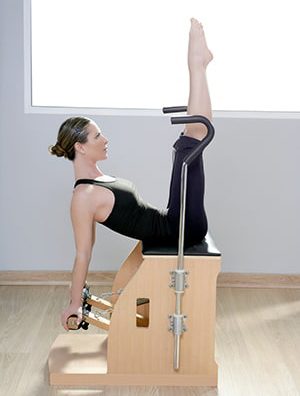
Ladder barrel: The Pilates ladder barrel is a piece of equipment used for flexibility and core strength exercises. It consists of a barrel and a ladder connected by a sliding base.
Who Can Benefit From Pilates
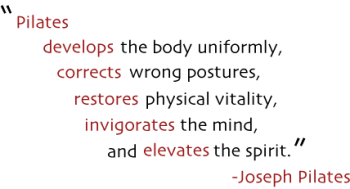
A recent study illustrates how people with lower back pain can benefit the most by following a well designed Pilates programme that utilises the specialist equipment that we have available in our Nothing Hill Studio, but many more people can benefit.
Pilates is popular for ante and postnatal conditioning – many of the conditions of the back and pelvis associated with pregnancy can be effectively treated.
It is also an excellent tool for dealing with the physical problems associated with aging. These include loss of muscle mass, strength flexibility, loss of bone density and poor posture. The jumping board on the reformer is especially helpful for this.
Pilates is also the exercise of choice for people that want to remain healthy and toned without getting bulky and overly muscled. Many people don’t like the atmosphere in conventional gyms. Our Notting Hill Pilates Studio offers a more relaxed environment and attract a different sort of person.
The Use of Pilates for Injury
Pilates is becoming increasingly popular for use in rehabilitation from injury. One reason for Pilates’ efficacy in this area is its ability to address muscular imbalances, the cause of many injuries. Imbalances can be caused by many different factors including, for example, the way we work out, lie down, sit, bend over, walk, and our general posture.
Pilates strengthens the core, and in doing so encourages the development of even musculature all over the body. Pilates is also well-suited to rehabilitation because of the ability to tailor the program to the individual. Also, Pilates allows physical therapists to give their clients more autonomy in their rehabilitation.
How Pilates Developed – A Brief History
Joseph Pilates was born in 1883, in Düsseldorf, Germany
He was not a healthy child, and suffered with asthma and rickets. He worked hard to fortify his physical health. His studies included gymnastics, anatomy and the eastern practices of yoga and Tai Chi.
By 1912, Pilates was living in England. Early on, he worked as a self-defence instructor, boxer, and circus performer. As he was German, he was eventually interned as an enemy during the First World War.This is where he developed his first ideas, which evolved further while working in the infirmary with injured soldiers.
He attached springs and pulleys to the infirmary beds to help rehabilitate injured soldiers with great success. These bed frames with springs attached were the first rudimentary versions of the Pilates equipment still in use today.
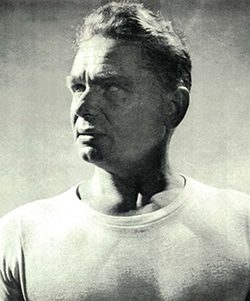
Joseph moved to New York in the 1920s, where he and his wife, Clara, opened a “body-conditioning gym”. He continued to develop the exercise system and Pilates equipment familiar to us today. He called his system Contrology, a term that has now fallen out of use. We simply refer to it as Pilates.
The Key Principles of Pilates
The key principles of Pilates as set out by Joseph Pilates guides every session in the Notting hill studio; they are: Centring Breathing Concentration Control Precision and flow .
Centring
Pilates called the very large group of muscles in the centre of the body – encompassing the abdomen, lower back, hips, and buttocks – the “powerhouse.” All energy for Pilates exercises is said to begin from the powerhouse and flow outward to the limbs. In other words, the Pilates technique asserts that physical energy exerted from the centre should coordinate movements of the extremities.
Pilates felt that it was important to build a strong powerhouse in order to rely on it in daily living. Modern instructors call the powerhouse the “core”

Concentration
Pilates demands intense focus. For instance, the inner thighs and pelvic floor may be assessed when doing a standing exercise that tones the triceps. Beginners are instructed to pay careful attention to their bodies, building on very small, delicate fundamental movements and controlled breathing. Since 2006 the Parkinson Center at the Oregon Health & Science University, usitlises Pilates for providing relief from the degenerative symptoms of Parkinson’s disease. We use the same method here in our Notting Hill Studio
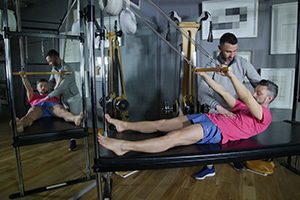
Precision
Practitioners assert that every movement in the Pilates method has a purpose. Every instruction is considered vitally important to the success of the whole. To leave out any detail is believed to forsake the intrinsic value of the exercise. The focus is on doing one precise and perfect movement, rather than many halfhearted ones. The goal is for this precision to eventually become second nature, and carry over into everyday life as grace and economy of movement.
A qualified Pilates instructor is expected to understand the technique well enough to adapt it to the real-world capabilities of his or her students. Students with physical disabilities, for example, should be given a Pilates regimen intended to improve their methods of physically compensating for their ailment
Flow
The classical Pilates repertoire has choreographed transitions to maintain the flow between exercises as well as during them. The smooth and slow nature of the movement enables the client to recruit the targeted muscles only and helps to avoid substitution or cheating. This style of movement targets slow twitch muscle fibres that maintain healthy posture. The connective tissues are also much more responsive to flowing movements as apposed to forceful ballistic ones. This helps the body’s tissues to stay pliable, promoting ease and efficiency in all movements.
Breathing
The Pilates breath it smooth and slow, with an inhalation through the nose and an exhalation through the mouth. The out breath is performed on exertion. The inhalation should expand the back of the chest wall while maintaining a gentle pelvic floor engagement and relaxed shoulder and jaw muscles. This sounds more complex than it is in practice. Although many people find the coordination of all these elements difficult at first, it becomes second nature before very long. Focusing ones attention and breath on a locked or tight area of the body can facilitate opening and releasing.
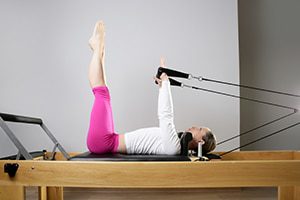
Ageing and Pilates
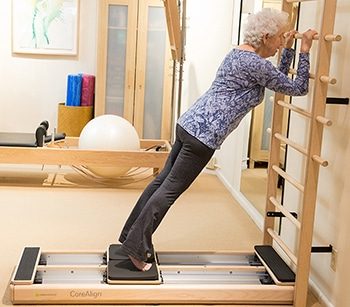
Pilates is one of the best methods of exercise for people over 40. One of the most attractive characteristics of Pilates is the fact that people of any age can start a program and gain benefits with no negative effects (such as strain and stress on the joints).
Pilates is renowned for its ability to make people feel and look younger. It increases the body’s flexibility and resiliency, and improves energy levels. This has made Pilates very popular older celebrities such as Madonna, Jamie Lee Curtis, John Cleese, and Hugh Grant.
It is partly the ability for Pilates programs to be closely tailored to the specific level of fitness and needs of the individual that makes it such a great choice for people of all ages.
Pilates and Athletic Performance
It is becoming increasingly common for athletes to engage in a Pilates programme. Pilates has a number of benefits for athletes, such as:
- Enhanced control: Pilates improves body control. Even athletes can have room for improvement in this area, and Pilates can improve their performance. Body awareness is an important component of control, and Pilates improves this, as well.
- Boosted power output: The body cannot exert its full power when it is functioning from a position of instability. Pilates is renowned for its ability to improve core stability.
- Injury prevention: The stability and strength created by the practice of Pilates makes athletes less likely to become injured, and can reduce the severity of injuries that do occur.
Olympic Athletes Who Do Pilates
Pilates is practiced by a number of Olympic athletes. Examples include: David Boudia: David Boudia is an American Olympic diver. He does Pilates, as it is beneficial to divers in a number of different ways. One of these is the fact that it helps them develop even more of the control needed to perfectly form the movements involved in diving. Another is the body awareness that Pilates practice cultivates.
Kerry Walsh-Jennings: Kerry Walsh-Jennings is a famous beach volleyball Olympian with several gold medals to her name. Walsh-Jennings started doing Pilates when she became pregnant. She says that it was instrumental in her regaining her strength after the baby was born, and that it has given her “a new body”.
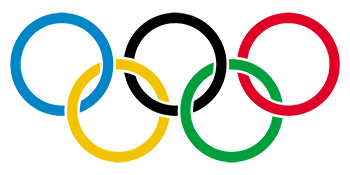
Victoria Pendleton: Victoria Pendleton is a famous British Olympic cyclist, with two gold medals as well as a silver. She is also in the European Cycling Hall of Fame. Pendleton does Pilates to continue improving her core strength and balance. Pilates was also instrumental in ensuring that she could recover from back problems that were interfering with her ability to cycle.
Andy Murray: Andy Murray is an Olympic tennis player and gold-medal winner. He started with Pilates after having back surgery, to ensure his full recovery and ability to continue as a top athlete. Murray continues practicing Pilates, and often talks about its benefits.
Missy Franklin: Missy Franklin is an Olympic swimmer who has won four gold medals, as well as one bronze. She practices Pilates for its many benefits, including core strength and balance. Pilates is a great choice of exercise for swimmers, as it promotes movement that flows out from the athlete’s core. It also supports body awareness.